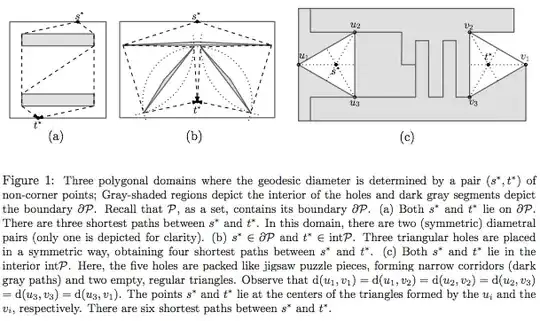I am curious about the following problem:
Given a polygon with holes and two convex subsets, $S$ and $T$, find points $s \in S, t \in T$ such that the shortest path between the two points has maximal length w.r.t. all point pairs in $S$ and $T$.
Note that both $s$ and $t$ might be interior points of the corresponding regions.
If $S$ would only be a point, i.e. the start point is fixed, we could build a Shortest Path Map (continuous Dijkstra) and could thereby find the farthest point.
Does anybody have any idea how to handle the case when $S$ is not just a point?
